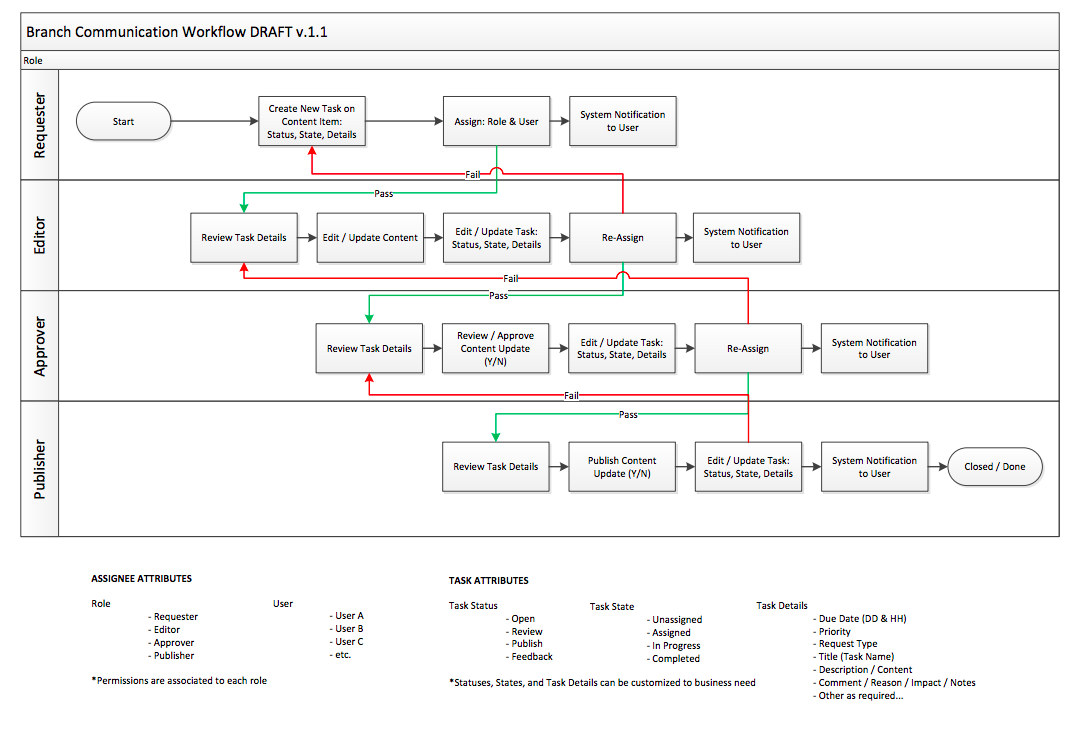One area where many businesses can find quick efficiency improvements is in process automation. Many teams still rely on their staff to complete mundane tasks on a daily basis. These tasks, such as reporting, data collection (e.g. counting votes), data entry (e.g. entering contact information), payment and registration processing, etc. are essential tasks for many businesses — but can easily be automated.
But even with the recognized improvement that comes with automating processes, many companies still hesitate to make changes.
In this article, we look at how you can get started with process automation, covering both:
- How to recognise in-house paper processes that can be automated
- How to start translating those paper processes into templates and workflows managed using your CMS
How to recognise inefficient in-house processes
The first step towards process automation and digitisation is recognising the low-hanging fruit that can be easily translated into a digital format. Fortunately, processes that are ready to be automated can be identified by some of their shared characteristics.
1. Is the process completed on a regular basis?
Simple repeatable processes are some of the easiest to automate, and often have the biggest impact. While large, infrequent tasks can seem more disruptive to your business, automating these tasks can have limited returns for your effort.
Automating the mundane tasks your business faces often has the biggest impact because they use a deceptive amount of employee time. Taking these jobs off of your staff's plates and allowing employees to focus on more important tasks has a cumulative impact on their productivity.
2. Is the task essentially the same each time?
Automating a process whose inputs change each time is possible, but much harder. Focusing on low-hanging fruit for the moment, we suggest looking for simple processes that are similar or the same each time.
One example would be compiling a weekly sales report. This report is generated each week by pulling from the same data and would be a good candidate for automation.
3. Does manual entry regularly create more work?
When looking for potential processes to automate, the last question you want to ask yourself is: where do manual mistakes frequently create more work? Invoicing is a prime example of this. When an invoice isn’t submitted on time, or an incorrect amount is invoiced/paid, it creates far more work for the teams involved.
Other ways to discover improvable processes is by shadowing people — observing what they do, what processes they use and identifying areas you think can be automated.
Talking with staff about their jobs can also reveal opportunities for automation. Ask questions like:
- What's the least favourite part of your job – what task(s) do you regularly do that you consider 'grunt work’?
- Where do you see the most mistakes made in your organization?
- Where do you run into bottlenecks in your job?
How to translate those processes into digital or CMS
What do you do once you have identified processes you want to automate?
What is the actual process?
First, you need to "map" the process to understand who does what and when? A whiteboard or a swim lane diagram (this one created by our Director of Digital Strategy, Simone Abel) is useful for this; it will help you visualize what is happening at each step.

It’s always worth consulting the people involved as well. Those engaging with these processes every day will have some of the best insight, and talking with them will give you a clear idea of not only how the process is supposed to work but also how it actually works day-to-day.
Engaging with the people involved in the process you want to automate is essential in catching small but important details. Manual processes have a flexibility that does not translate into the digital world. For example, you have a workflow that ends with approval by a VP but, because they travel so often, the person in the Director role has covered the responsibility. This deviation from the documented flow would be hard to catch without talking with those involved. In this example, the impact of not consulting with those involved could be big because not including the ability to get approval outside of the VP in the new process will create a new bottleneck rather than improving the process efficiency.
Train user groups on the new process
Now that you have your process mapped and your user groups identified, it’s time to train them on the new process. With most of these users consulted and already bought into the change, this won’t be as drastic a change for them to adopt, but rather putting into action everything that was already discussed.
Once you’ve trained your staff, it’s time to make the change to the CMS and phase out the old system. In theory, the transition will be smooth and painless; in the real world, it never is. We recommend setting up either additional support for the initial period or dedicating some of your internal resources each day to solving problems that crop up. This will help ensure everyone is using the system properly and people aren’t developing their own workarounds which might undermine the quality of the automation.
Conclusion
Process automation is here – and it’s something to embrace rather than fear. Hopefully, you know enough now to start identifying what processes within your organization are ready for automation.
The results our clients have seen automating their processes has been remarkable, and always worth the investment. We encourage everyone to take a critical eye to the way they do business and think about how they can make it more efficient using technology.
